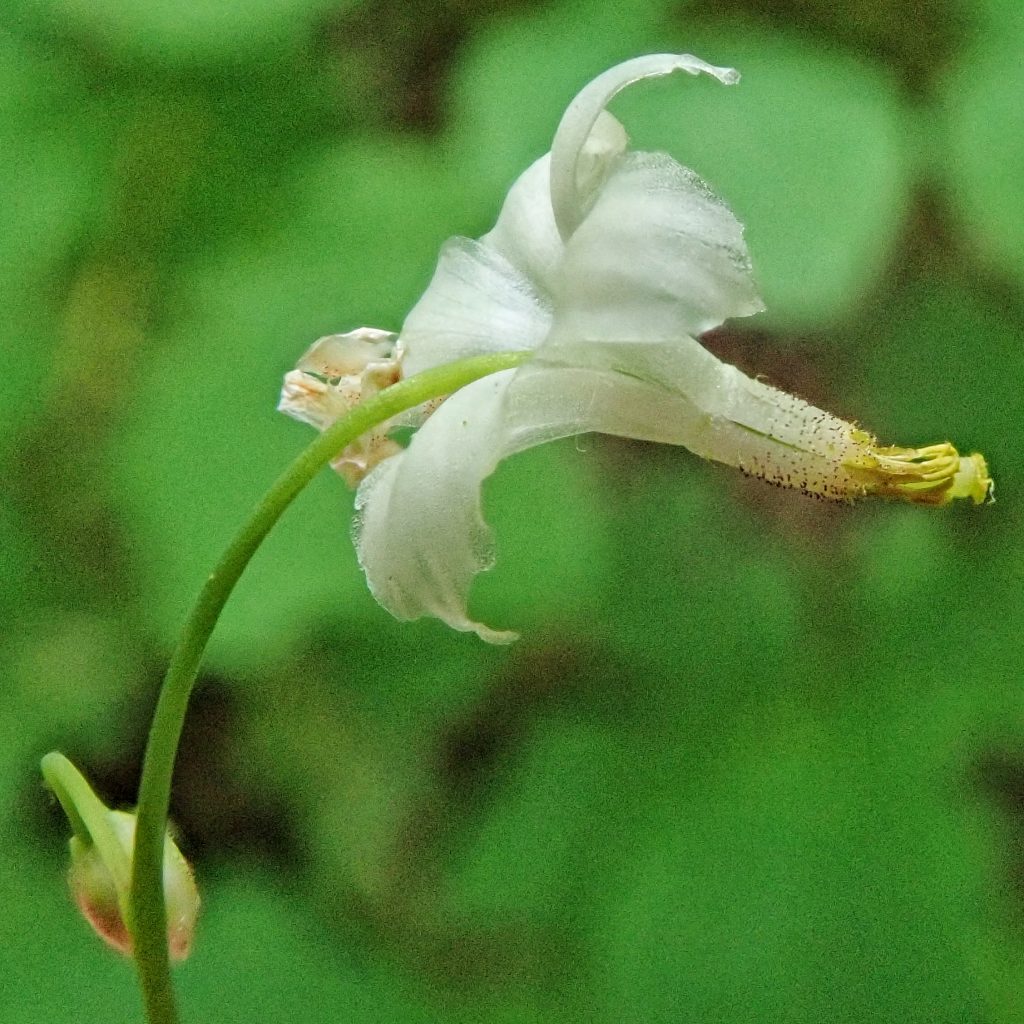
It is somewhat ironic that the most common common name for this plant in the family Berberidaceae is northern inside-out flower, since it’s range does not appear to extend north of King County, Washington. But it is the most northern of the members of Vancouveria, the inside-out flowers. Other common names are northern Vancouveria, white inside-out flower, and American barrenwort.
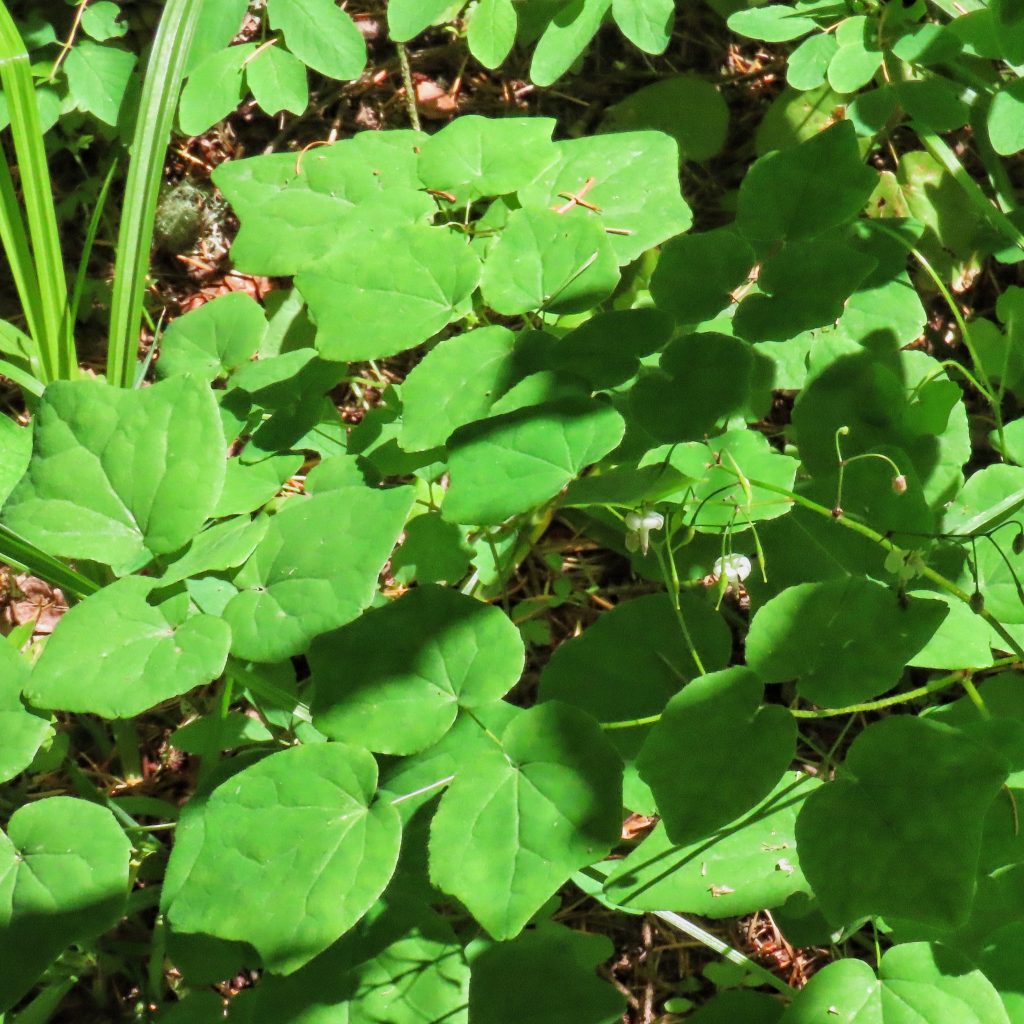
The barrenworts are so called because of their use by herbalists for treatment of erectile dysfunction. Most of them are in the closely related genus Epimedium, but, like members of that genus, the roots of Vancouveria hexandra also contain icariin, which is one of the PDE5 inhibitors that can mitigate that condition. Some indigenous peoples chewed the leaves as a cough suppressant, and modern medicine uses some of the plant’s constituents to treat sinus congestion, hay fever, and chronic rhinitis.
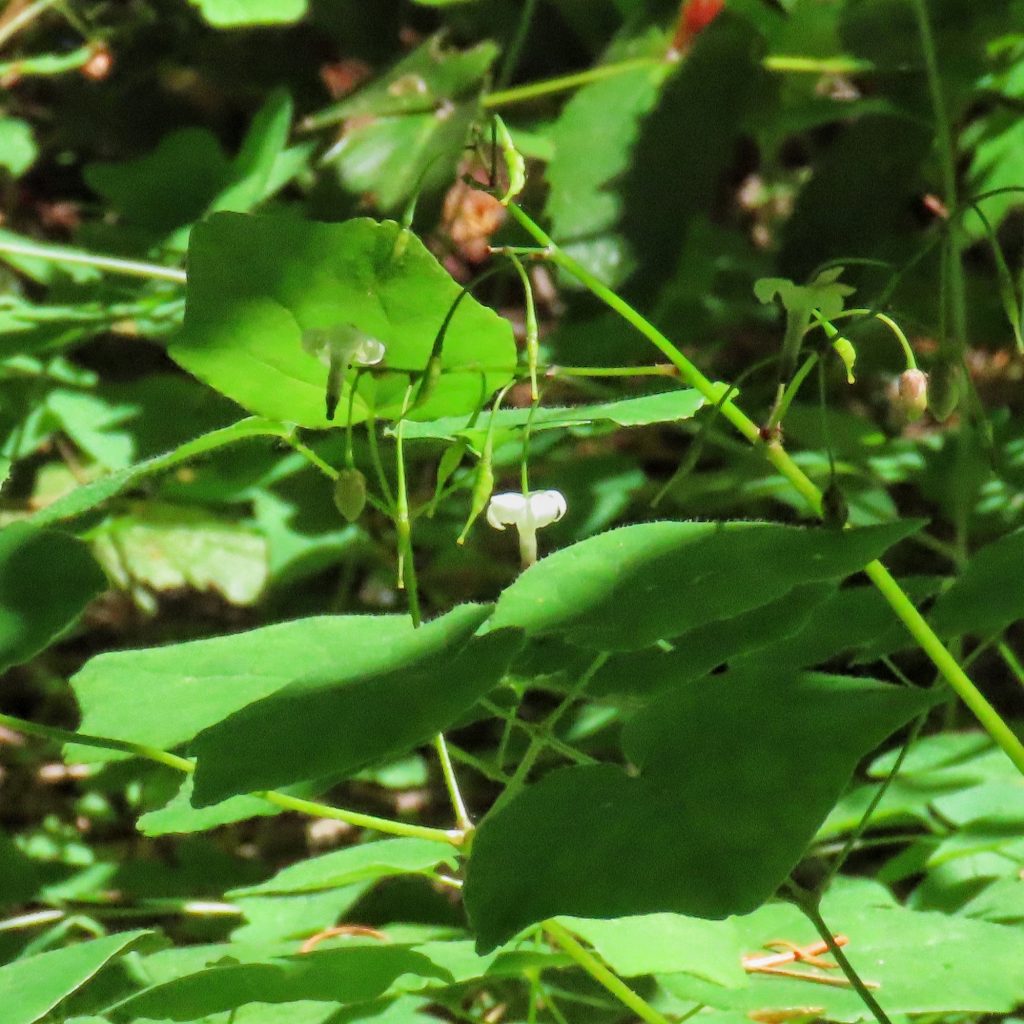
These members of the barberry family (Berberidaceae) are very cool plants! They are eminently recognizable even without flowers due to the duck foot shape of the leaves. And the flowers themselves are unmistakable, with the white petal-like sepals strongly reflexed to expose the stamens (much like the shooting stars, Dodecatheon spp.), which is the origin of the common name inside-out flowers.
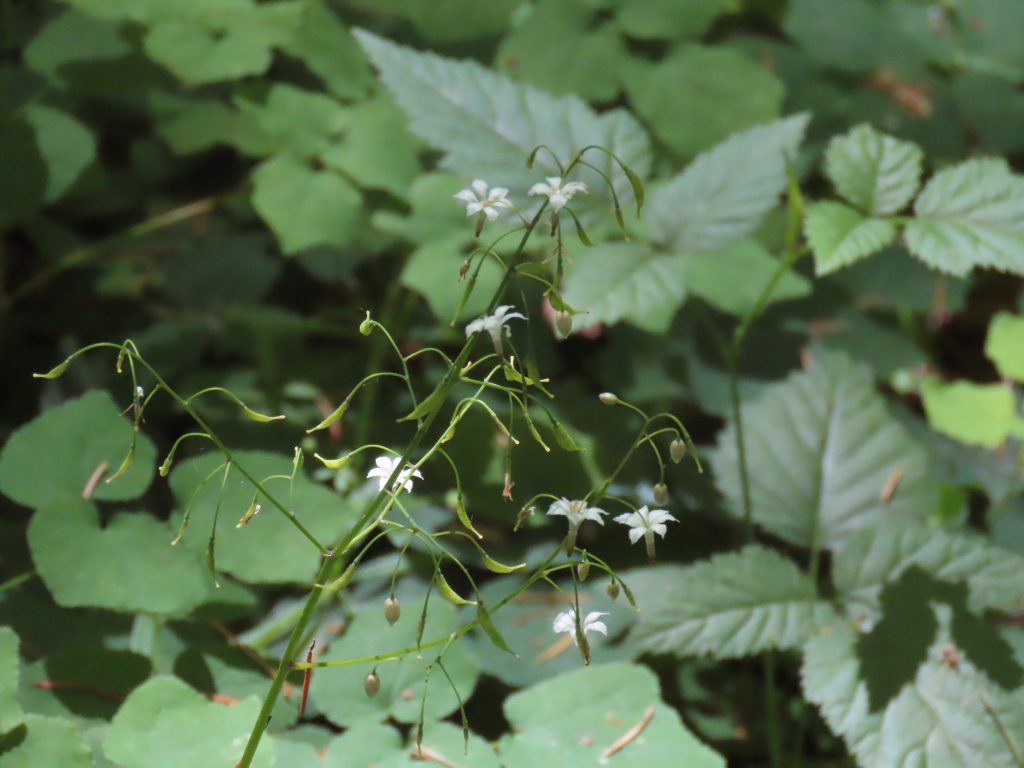
Based on the number of nurseries which talk about this plant, it appears that it is becoming popular with folks who garden with native species, because it is low maintenance, creeping but not particularly invasive so that it fills a space without encroaching on its neighbors, is well adapted to shade, and is attractive in a delicate sort of way.
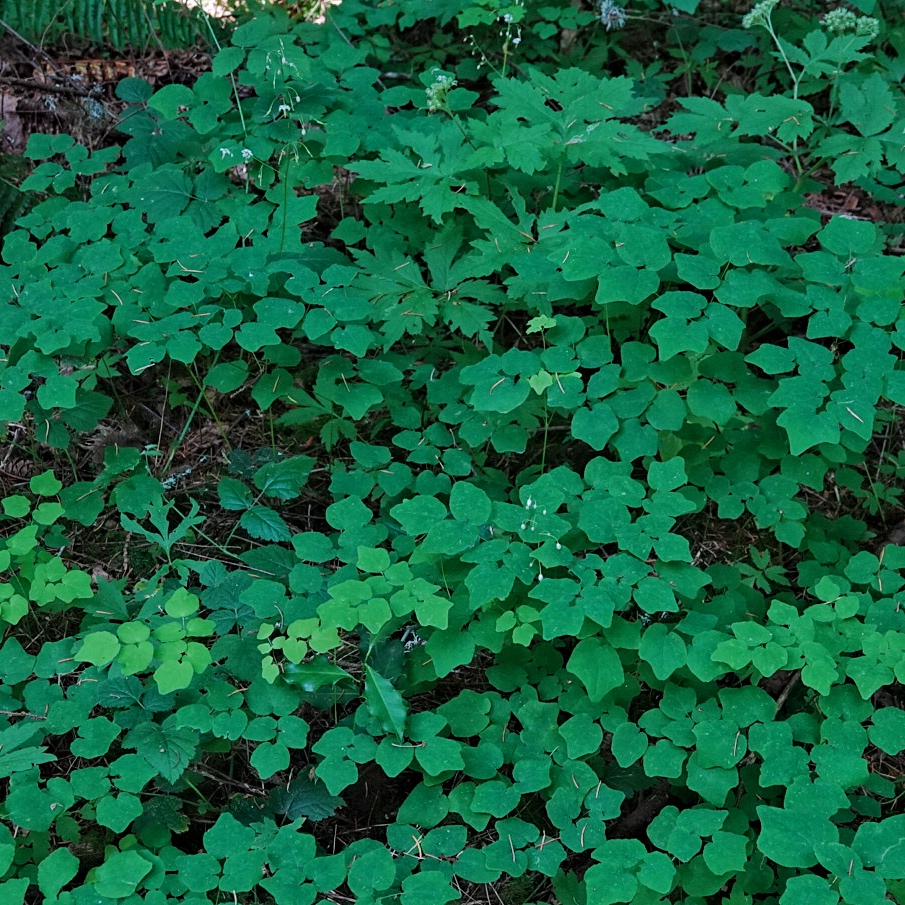
Description-Perennial; medium sized (up to 18” tall), mat forming, with 2-3 duckfoot shaped leaves per petiole which are up to 35mm long; begins losing leaves when fruit is mature, but some may persist into autumn; flowering stalks leafless, multiply branched, with many relatively long peduncles each leading to a single flower; flowers white, small, sepals and petals deeply reflexed as though they were turning inside out, petal apex reflexed back toward stamens.
Similar species–V. planipetala has shiny, evergreen leaves, flowers smaller and the apex of the petal is notched rather than reflexed, and it grows in the redwoods of s Oregon and n California; V. chrysantha has yellow flowers and only grows in the Siskiyous; Campanula scouleri has oval, pointed, serrated leaves.
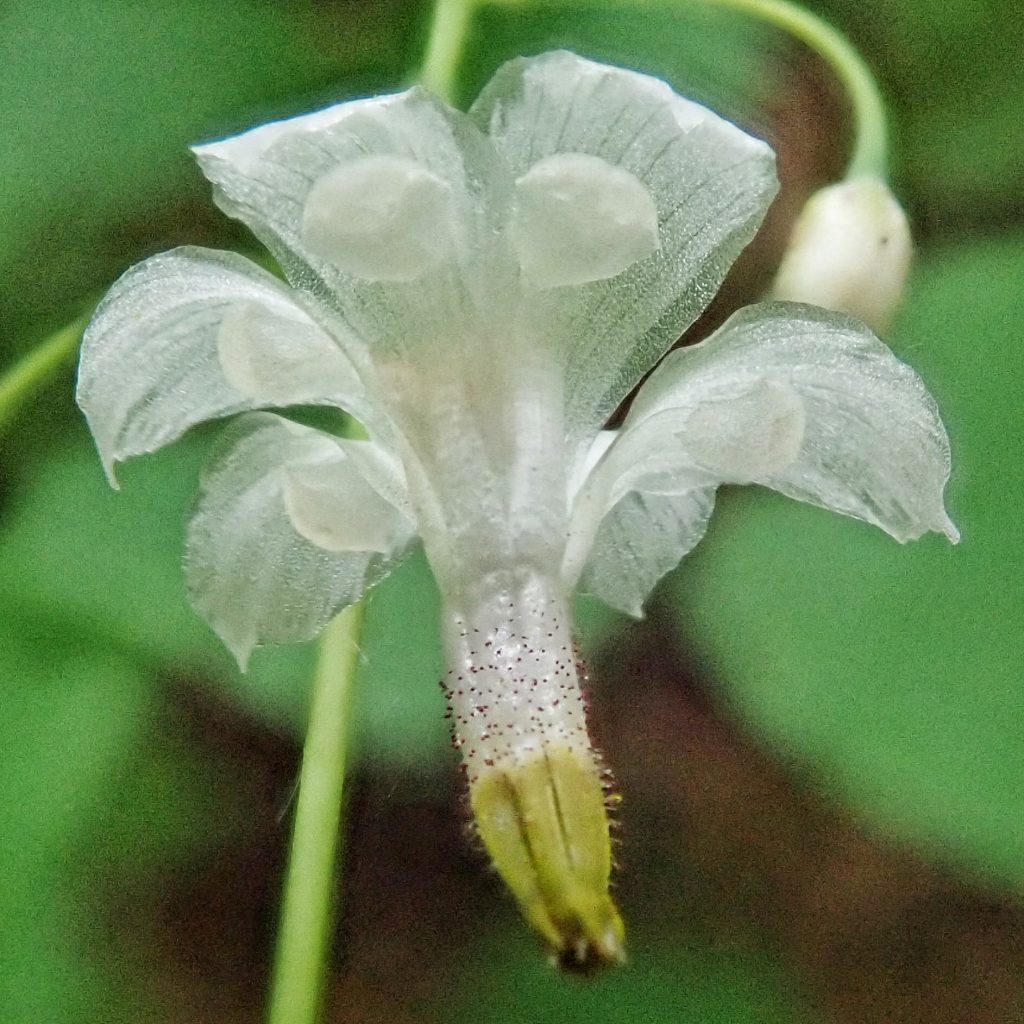
Habitat-Moist to mesic shaded areas in Douglas fir and redwood forests up to 5,000’ elevation.
Range-West Coast endemic; from King County south on the west side of the Cascades, nw California, and in the Columbia River Gorge; possibly disjunct populations in some interior mountains.
Reproductive timing-May to July
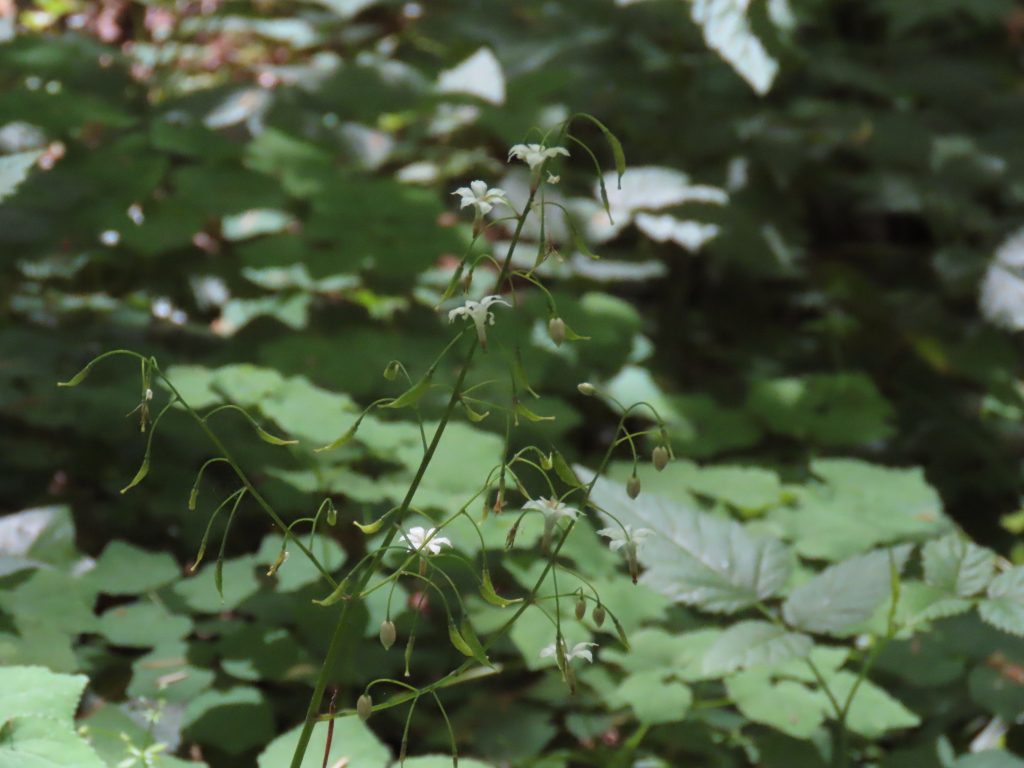
Eaten by– Some browsing by deer, slugs, and snails, but I can’t find evidence that it is a larval host for any arthropods.
Etymology of names–Vancouveria honors the British explorer Captain George Vancouver (1758-1798). The specific epithet hexandra is from the Greek for ‘six males’ and refers to the 6 stamens of this species.
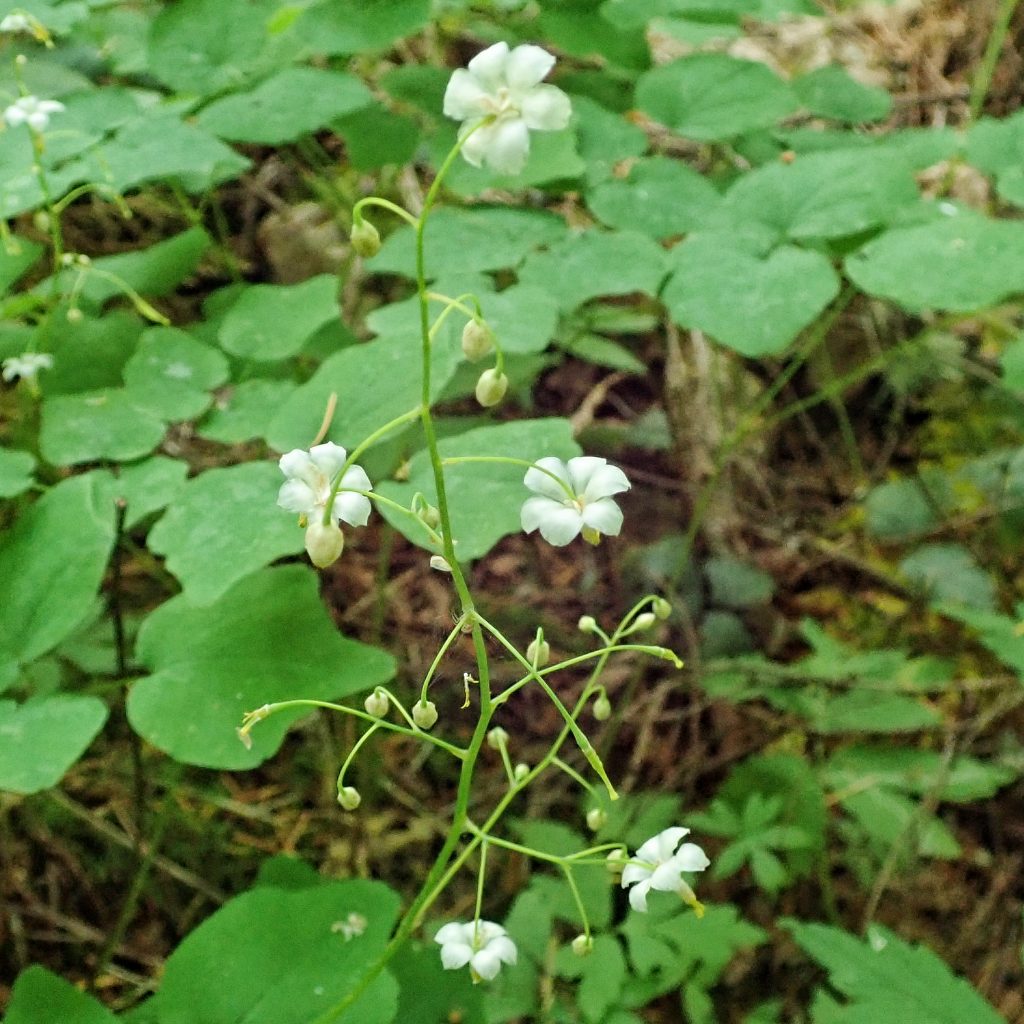
https://portlandnursery.com/natives/vancouveria/
http://www.efloras.org/florataxon.aspx?flora_id=1&taxon_id=233501341
http://biology.burke.washington.edu/herbarium/imagecollection/taxon.php?Taxon=Vancouveria%20hexandra
Vancouveria hexandra | Northern Inside-out Flower | Wildflowers of the Pacific Northwest
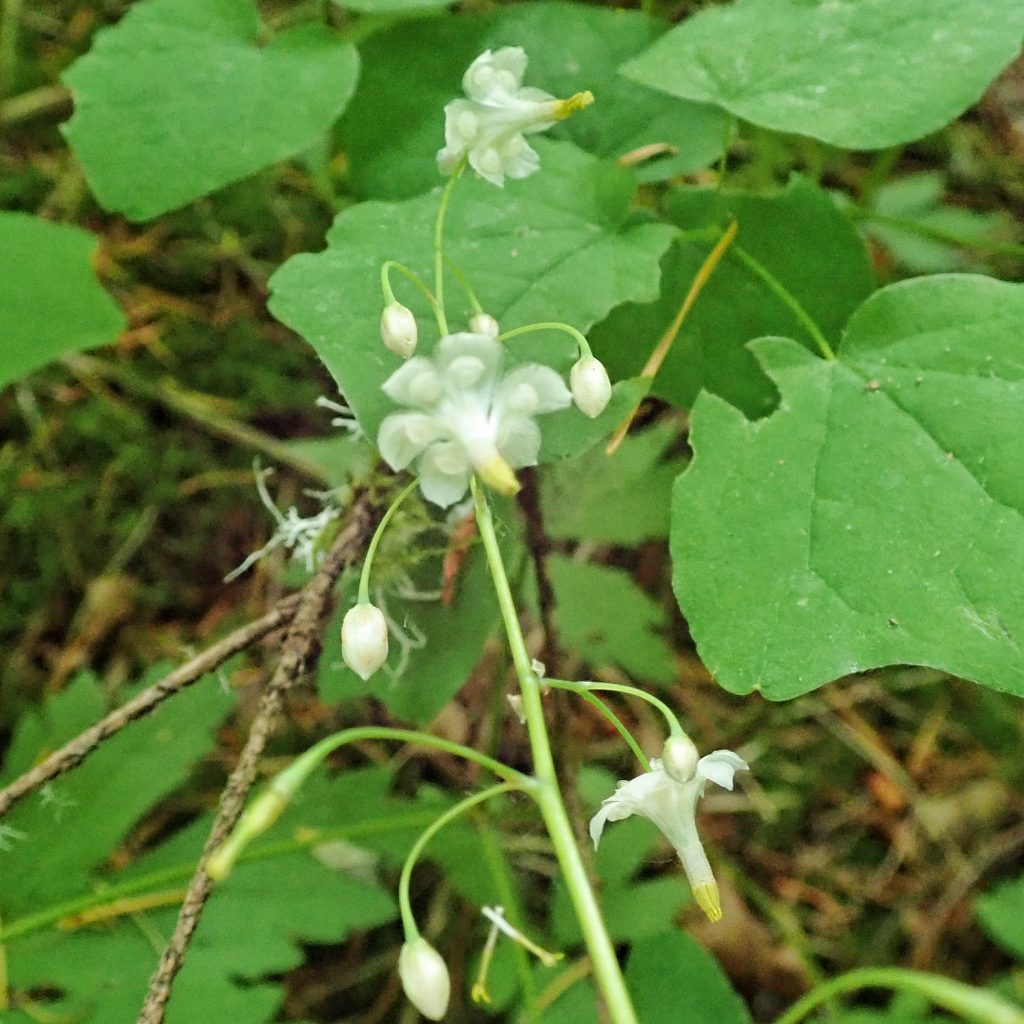
I first discovered this plant (V. hexandra) when I moved into a house with a lovely little strip of it lining the shady walkway. So very grateful for this piece about it and its relatives.
Thank you! So glad to hear that it was useful!
Thank you! I have some of these lovely plants in my native plants garden. I appreciate your photos which show the complexity of the tiny blossoms.
This and the Western Monkey Flower vie for my favorite local flower. Years ago when I first spotted the foliage, I thought fern because of the delicate stems. Thank you for all the information!